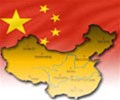

China’s new bank loans fell more than expected in July to their lowest in nine months while broad credit growth hit a 17-month low, adding to market expectations that modest policy easing may be needed to underpin the country’s economic recovery.
The world’s second-largest economy has largely rebounded from disruptions caused by the pandemic last year, but recent new outbreaks of the Delta variants and severe flooding threaten to slow its recovery.
Chinese banks extended 1.08 trillion yuan ($166.5 billion) in new yuan loans in July, well down from 2.12 trillion yuan in June and the weakest level since October 2020, according to data released by the People’s Bank of China (PBOC) on Wednesday.
Analysts polled by Reuters had predicted new yuan loans would fall to 1.20 trillion yuan. Despite the drop, the total was still higher than 992.7 billion yuan a year earlier.
Chinese banks doled out a record 12.76 trillion yuan in new loans in the first half of 2021, even as the PBOC sought to cool broader credit growth to rein in debt risks amid rising defaults.
Financial markets are increasingly looking for signs that authorities will announce additional measures to stimulate activity as post-COVID growth rates moderate. In July the PBOC cut the reserve requirement ratio (RRR) for banks, releasing around 1 trillion yuan in long-term liquidity, and analysts expect another RRR cut this year.
“After stabilising in June, broad credit growth resumed its downward trajectory in July and is now at its slowest since February last year,” Capital Economics said in a note to clients.
“We expect the slowdown and resulting headwind to the economy to continue in the coming months, further RRR and policy rate cuts notwithstanding.”
Many analysts are lowering growth forecasts for the second half of the year as China imposes new restrictions to battle an outbreak of the Delta variant, which will dampen activity, particularly in services such as tourism, retail and restaurants.
Continued curbs on property speculation, higher raw material prices, tougher pollution controls and severe flooding in parts of the country are also weighing on growth.
Policy insiders and analysts told Reuters last week that China would bolster the economy with faster spending on infrastructure projects while the central bank would support activity with modest easing steps. Most analysts believe policy rate cuts this year are still unlikely, though some have recently begun to pencil them in.
The central bank said on Monday it would keep monetary policy flexible and appropriate to maintain stability as the pandemic persists and the domestic economic recovery is uneven. The PBOC cited a rebound in COVID-19 cases globally and the risk from expected policy shifts in developed countries that could affect cross-border capital flows.
A meeting of the Politburo, a top-decision making body of the ruling Communist Party, pledged in July to maintain an accommodative stance in the face of an uneven domestic recovery and global uncertainty.
Broad M2 money supply grew 8.3% from a year earlier, central bank data showed, below a forecast of 8.7% in the Reuters poll and the 8.6% pace seen in June.
Outstanding yuan loans grew 12.3% in July from a year earlier, in line with expectations, and unchanged from June.
Growth of outstanding total social financing (TSF), a broad measure of credit and liquidity in the economy, slowed to 10.7% in July – the weakest reading since February 2020 – from a year earlier and from 11% in June.
TSF includes off-balance sheet forms of financing that exist outside the conventional bank lending system, such as initial public offerings, loans from trust companies and bond sales.
In July, TSF fell to 1.06 trillion yuan from 3.67 trillion yuan in June. Analysts polled by Reuters had expected July TSF of 1.70 trillion yuan.
Source: Reuters (Reporting by Judy Hua and Kevin Yao; Editing by Kim Coghill)